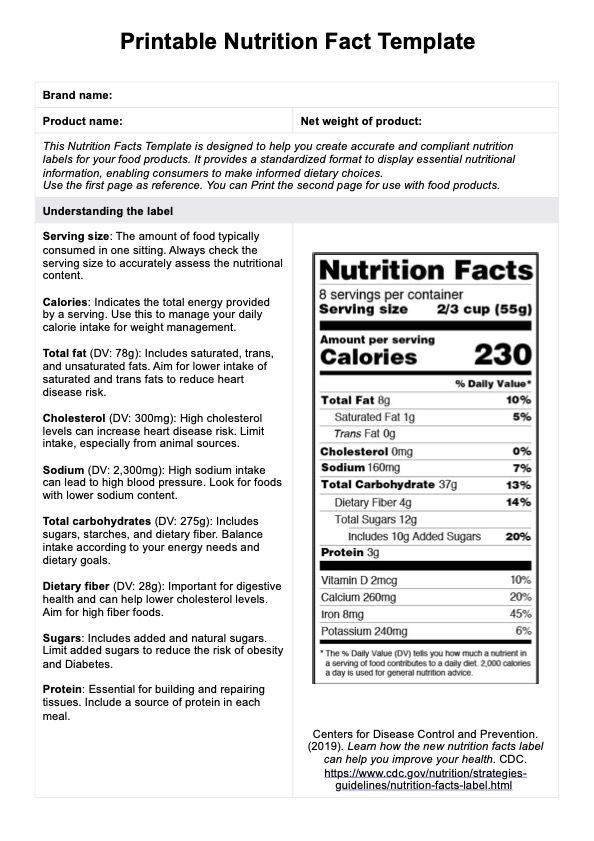The format for nutrition facts includes sections for serving size, calories, total fat, cholesterol, sodium, total carbohydrates, dietary fiber, sugars, protein, and vitamins and minerals. There used to be various other label formats, but they have been standardized now.

Printable Nutrition Fact Template
Ensure informed dietary choices and comply with FDA standards by creating nutrition labels with our Nutrition Fact Template today.
Printable Nutrition Fact Template Template
Commonly asked questions
The 5/20 rule on nutrition labels is a guideline that helps consumers make healthier food choices by evaluating the % Daily Value (%DV) of nutrients. According to this rule, less healthy nutrients, such as saturated fat, sodium, and added sugars, should be at or below 5% DV, while healthier nutrients, like fiber, vitamins, and minerals, should be at or above 20% DV.
A nutrition facts label is required to include several key components: serving size, calories per serving, total fat (including saturated and trans fats), cholesterol, sodium, total carbohydrates (including dietary fiber and total sugars), protein, and specific vitamins and minerals such as vitamin D, calcium, iron, and potassium. Additionally, the label must indicate the amount of added sugars and provide the %DV for each nutrient to help consumers understand their contribution to a daily diet based on a 2,000-calorie intake.
EHR and practice management software
Get started for free
*No credit card required
Free
$0/usd
Unlimited clients
Telehealth
1GB of storage
Client portal text
Automated billing and online payments











